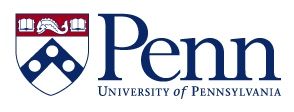Exchange to Change: Change Starts at Home
In the third installment of the Economy League’s Exchange to Change series, Allison Kelsey examines fresh ideas and mindsets that Leadership Exchange participants have ended up applying within their own organizations.

Looking back on 10 years of the Greater Philadelphia Leadership Exchange, we can point to dozens of smart ideas that have been transplanted from other regions and implemented in our own. While these best practice transplants often take the form of programs and collaborations that directly benefit our region, just as great an impact has been made by fresh approaches to leadership that participants have learned about on Exchanges and ended up applying inside their own organizations.
The best example of a sticky idea from a Leadership Exchange visit effecting change within Philadelphia-area organizations came from our trip to San Francisco in 2010. Our Bay Area GPLEX keynote speaker Chip Heath, a Stanford professor, had just published what went on to become a bestselling business book called Switch: How to Change Things When Change Is Hard. In it, Heath suggested that when making a change in an organization or even a lifestyle, rather than looking for what’s wrong or not working and trying to fix it, instead we will be more successful at analyzing what is working – what Heath called the “bright spots” – and trying to replicate that. It’s much more than seeing the glass as half-full – it’s a lens through which leaders can balance much of what’s hard about change and also make the change stick.
Heath provides an example of a health care expert sent to Southeast Asia to reduce malnutrition in children. The doctor saw that the water was bad, the local economy was limited – not problems he could solve. He decided to do some basic data collection and weigh and measure village children. Although families were roughly the same socio-economic status, some children clearly were thriving more than their peers. Mothers were interviewed and diets analyzed, and it turned out that the families with healthier children had been adding the little shrimp found among the village’s rice paddies to the rice they fed their children. The doctor encouraged this simple but not widely used practice with the rest of the families, and gradually their children gained weight and began to catch up to health norms. A bright spot victory!
Our Leadership Exchange cohort, too, grasped the utility of the “bright spot” lens for application in their own organizations. Reflecting upon bringing this idea back to a global university, Penn Executive Vice President Craig Carnaroli said, “Listening to Heath sparked in me the desire to utilize ‘bright spots’ as a tool with our senior leaders to focus on the positive outcomes of their work and how to adapt to challenging issues in their departments.” He had them read the book and ask themselves: What have we done well - and is this success sustainable in the future? How did we do it? What were the components of this success? Who had a role and responsibility?
In Carnaroli’s view, the bright spots method has helped Penn “get to the heart of studying our strengths, which is useful in strategic planning.” He points to the university’s new Pennovation Center in Grays Ferry as an example of building on Penn’s core research and real estate development strengths to create a new 23-acre campus to foster innovation-based entrepreneurship and growth.
The Philadelphia Convention and Visitors Bureau, too, applied the “bright spots” idea to focus (pun intended) a social media campaign. Through a series of #brightspots posts after the Bay Area Exchange, PHLCVB asked Philadelphians to call out what’s great about Philadelphia and used the crowdsourced people, places, and things to inform its ongoing messaging and marketing of the region.
And at the Economy League, the bright spots mindset has shaped our approach around advancing the World Class Greater Philadelphia agenda. Rather than focusing on what isn’t working around improving education outcomes, growing businesses, and investing in infrastructure in our region, we have made a point to highlight organizations and initiatives that have been successful and talk about how they’ve been able to make an impact around complex regional challenges.
Another example of a Leadership Exchange experience leading to internal adoption centers on one of the most popular elements of each Leadership Exchange – the in-depth, small group site visits and behind-the-scenes tours that we call “regional explorations.” Following our 2012 trip to Toronto, leaders at VISIT PHILADELPHIA, the region’s tourism agency, decided to create regional exploration-style experiences for their staff.
In describing why VISIT PHILADELPHIA chose to apply the regional exploration approach internally, including trips to the Philadelphia Naval Yard and University City Science Center, Vice President Fritz Smith says, “Like most non-profits, we are focused intensively on our core mission. But, based on the valuable lessons we learned during the Toronto visit, we realized that right here in our backyard are people, organizations, and regional clusters doing very different work yet who have insights, new ideas, and innovations that can be directly applicable to our work.” Smith added that the explorations “also serve as a valuable tool to keep our fingers on the pulse of the region and know where innovation and economic growth is coming from as we market the region.”
We’re proud of the many ways that Leadership Exchange participants have imported innovative approaches from elsewhere to our region. It’s the new ideas and leadership mindsets that end up finding their way to the internal operations of leading businesses and organizations that may have some of the most lasting impact.
Explore the full Exchange to Change series
Apply for the 2016 Greater Philadelphia Leadership Exchange >>

The Exchange to Change series is made possible through the generous support of the University of Pennsylvania.